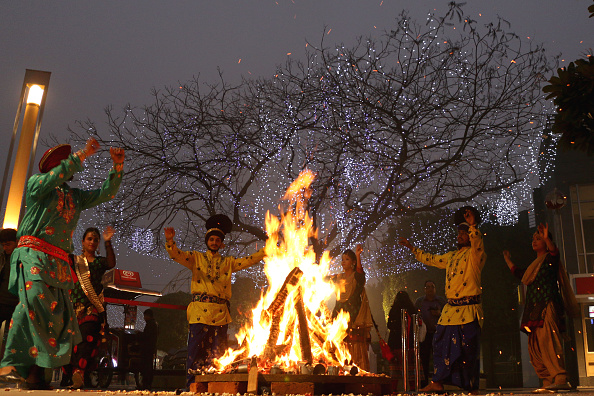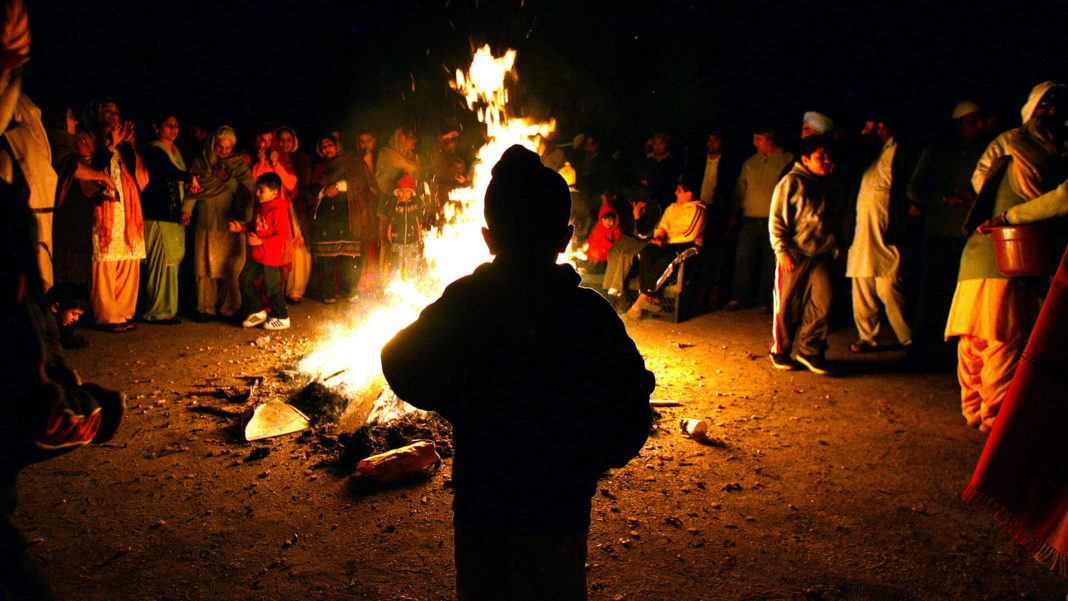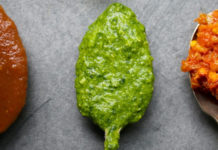One of the most well-known celebrations in India is Lohri, which is mainly celebrated in Punjab and Haryana state. South India celebrates this festival in another form as Pongal. In North India I t’s celebration marks the arrival of spring and the end of the bitter winters. People therefore commemorate this event every year on between 13th to 15th January by lighting a bonfire. Its definition really includes the term period for harvesting the winter crop known as Rabi.
In India, the celebration of this day truly gets underway with children singing songs and gathering treats, particularly sesame seeds, from every home. All of the delectable treats are later offered to the fire, after which people share them with their loved ones or neighbours. Popcorn, peanuts, Rewri, and gajjak are some of the festival’s most well-liked delicacies.
When the same celebration is observed in nations like the US, however, things are different. But now that there is a sizable Indian community living overseas, one can celebrate this occasion just as they would back home.

So, How is it like celebrating Lohri at a Home away from Home?
On Lohri, people gather at temples.
People primarily congregate at one of the well-known NRI temples in the USA to take part in the Lohri festival celebration. The priest then prays to God and addresses the crowds gathered in the temple, explaining the significance of this day. Then, a bonfire is lit on the grounds of the temple, and guests take turns going around it while offering the flames popcorn and peanuts.
Offering a Meal on Lohri
One can also observe and assist in managing the crowd assembled to take advantage of the meal provided as a community lunch in some temples. The distribution of traditional Indian foods like rice, makki di roti, sarson da saag, and kadhi, which are produced with a lot of spices, might be assisted here.
Restaurant celebrations
It is true that there are numerous Indian restaurants located abroad that offer special holiday menus to their patrons. In addition to providing unique traditional dishes, several NRI-friendly restaurants in the USA also provide bonfires and music to tap to. It is important to keep in mind that that while some of these eateries offer free access, others charge a price to celebrate this occasion.
As was previously noted, with sizable Indian populations growing abroad, individuals today also celebrate this anniversary by congregating at one of the celebration locations. Before lighting a sizable bonfire, authorization is obtained, and the event is then celebrated as it is in the native nation.







